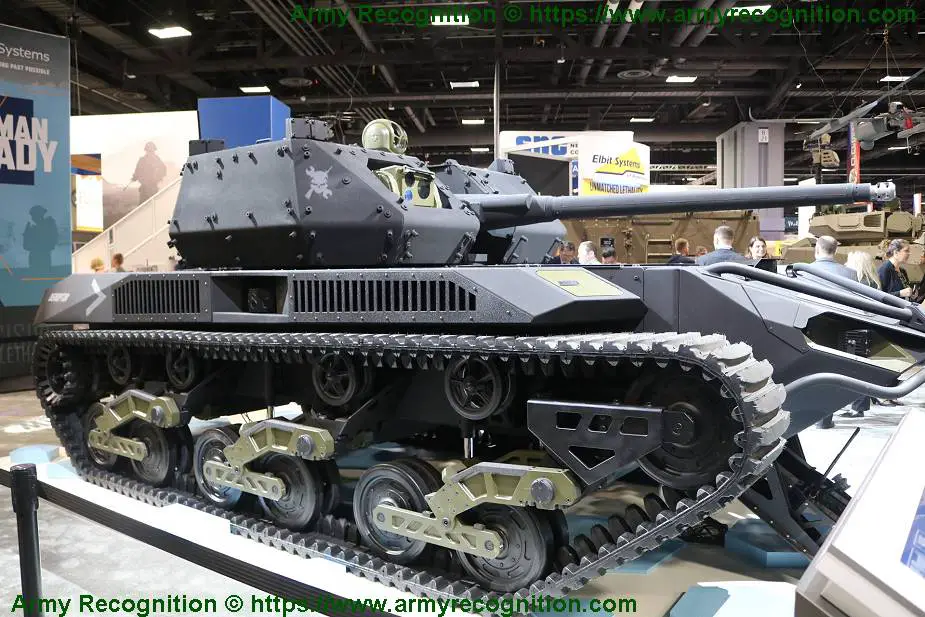Breaking news
Textron Systems delivers the fourth RIPSAW M5 unmanned tracked ground combat vehicle to US Army.
According to information published on June 2, 2021, Textron Systems and Howe & Howe Inc delivered the fourth RIPSAW M5 unmanned tracked ground combat vehicle to the U.S. Army in support of the Robotic Combat Vehicle (RCV) medium program. With innovative engineering and systems integration, this vehicle offers unprecedented endurance and revolutionary capabilities. Its hybrid engine allows for quiet maneuvers and increased reliability.
Follow Army Recognition on Google News at this link

Textron Systems RIPSAW M5 tracked unmanned combat armored vehicle at AUSA, October 2019. (Picture source Army Recognition)
Leveraging Howe & Howe’s commitment to innovation, and Textron Systems’ decades of design and manufacturing excellence, our M5 vehicles provide the speed, mobility and unmanned capability needed to modernize future forces, while protecting our warfighters. The customer will begin integration and testing of their own robotic controller technologies in preparation for the 2022 Soldier Operational Experiment. Insights gained from these vehicles will help shape future capability requirements and program priorities.
The Robotic Combat Vehicle (RCV) is a program launched by the U.S. Army to acquire different types of unmanned ground combat vehicles including the RCV-L, RCV-M, and RCV-H. The whole Robotic Combat Vehicle family will use common navigational software and control interfaces already being field-tested. Each variant will use the same electronic and mechanical standards, a so-called modular open architecture that should let soldiers in the field plug and play a range of payloads, from missiles to smoke generators to radio jammers.
While all of the variants are payload agnostic and can be equipped with a variety of modular mission payloads – such as Chemical, Biological, Radiological and Nuclear detection kits, smoke obscuration modules, electronic warfare and various weapon systems – the Light variant, under 10 tons, could likely support reconnaissance-related missions; the Medium, under 15 tons, could support direct fire augmentation; and the Heavy, 20-25 tons, could bring decisive lethality to its assigned unit.
This summer both the RCV (L) and RCV (M) vehicles will undergo shakedown testing individually, in operations together, and eventually combined with the ground vehicle capability testbed, the Mission Enabling Technologies Demonstrators (MET-D) that serve as the RCV control vehicles during testing. MET-Ds are technology development tools that help the U.S. Army to evaluate emerging technology in a relevant tactical environment and decide if the new technology is worth integrating on new or legacy combat platforms.
The RIPSAW M5 from Textron Systems and Howe & Howe Inc is one of the candidates for the RCV-M variant of the RCV program which must have a weight from 10 to 20 tons.
The Ripsaw was a concept of tracked unmanned ground combat vehicle designed and built by Howe & Howe Technologies which is now part of Textron Systems. It is powered by a Diesel hybrid engine. The tracked suspension consists on each side of six road wheels, four return rollers, a drive sprocket at the rear, and an idler at the front. It can reach a maximum speed of 72 km/h.
In October 2019, during AUSA, defense exhibition in Washington D.C., the RIPSAW M5 was presented with a Protector medium-calibre turret-30 (MCT-30) armed with a 30mm/40mm Bushmaster cannon and a 7.62mm coaxial gun.


























